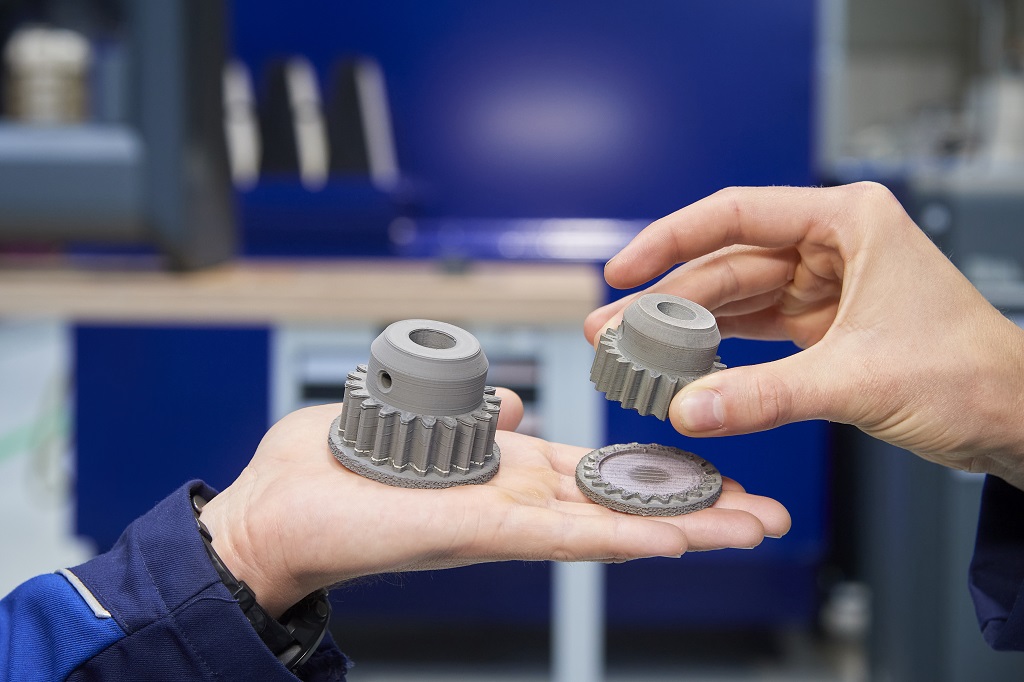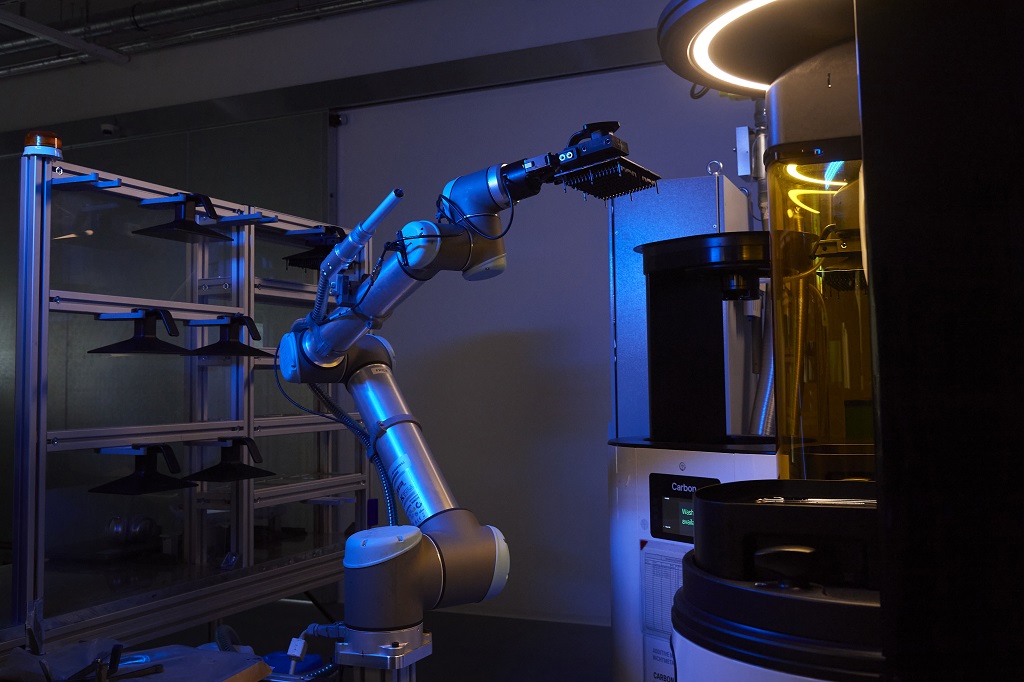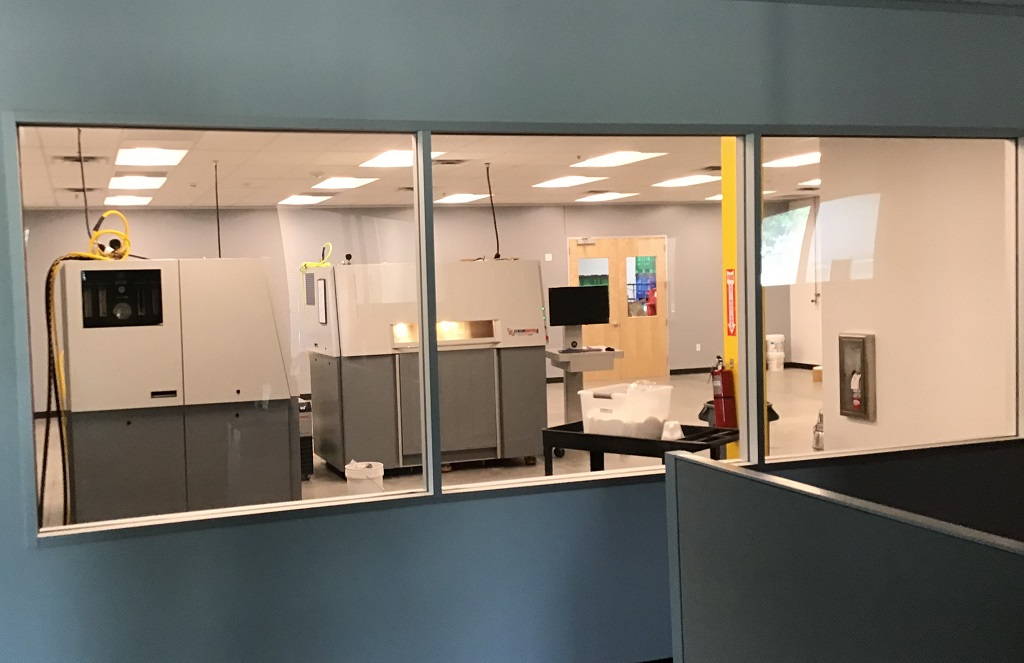
Two major new additive manufacturing-focused technology centers have recently opened, signalling the seriousness of 3D printing as strategic focus.
About two weeks ago, BMW announced the opening of its new €15 million Additive Manufacturing Campus outside Munich. Today, Evonik has announced the opening of its new technology center for 3D printing in Austin, Texas.
While these facilities obviously have very different focuses, both signal a very important message: additive manufacturing is worth major investment.
BMW Additive Manufacturing Campus

Two years ago, BMW Group announced its intent “to invest more than €10 million in a new Additive Manufacturing Campus” to be located “in Oberschleissheim, just north of Munich, the facility will allow the company to continue developing its expertise in this field of work.”
At that time, Jens Ertel, Head of the BMW Group’s Additive Manufacturing Center and the future campus director, said:
“Our new facility will be a major milestone in additive manufacturing at the BMW Group. The team there will evaluate new and existing technologies in both plastics and metals printing and develop them to series maturity. Our goal is to provide the optimum technology and process chain, be it for individual components, small production runs or even large-scale manufacturing.”
While the 2018 announcement of intent had the opening for the new campus slated to go on stream in early 2019, set to house “over 30 industrial systems,” the grand opening was held this June 25 for the facility, which with a €15 million houses “about 50 industrial systems that work with metals and plastics.”
BMW has been working with 3D printing since 1991, when the company first integrated the technology into prototyping use for concept vehicles. They note of use that’s ramped up over the decades since:
“By 2010, plastic-and metal-based processes were being rolled out, initially in smaller series, to produce items such as the additively manufactured water pump wheel in the DTM race cars. Further series production applications followed from 2012 on, with a range of components for the Rolls-Royce Phantom, BMW i8 Roadster (2017) and MINI John Cooper Works GP (2020), which contains no less than four 3D-printed components as standard.”
3D printing among automakers has been picking up substantially especially over the last decade, though almost all major OEMs have been using the technology longer than that. That BMW is investing now in a dedicated facility to keep both prototyping and production capabilities under the same roof is indicative of a pickup in this long-running trend toward adoption.
“Over the last 30 years or so, the BMW Group has developed comprehensive skills, which we’ll continue to enhance on our new campus, which has the latest machines and technologies. In addition, we develop and design components that are faster to produce than by conventional means, offer flexibility in terms of their form, and are also more functional,” Ertel said now of the Additive Manufacturing Campus. “We are working hard to mature additive manufacturing fully and benefit from it as far as possible throughout the product life-cycle, from the first vehicle concept through to production, aftersales and its use in classic vehicles.”
BMW is using both plastic and metal 3D printing technologies; a glance through photo assets shared of the new campus shows systems from Desktop Metal, HP, Carbon, and Nexa3D. “Up to” 80 are employed at the campus, serving as a central company hub of additive manufacturing expertise. BMW also operates another 50 3D printing systems throughout its global production sites. In 2019, the company used its many 3D printers to produce close to 300,000 parts.
On top of operating many 3D printing systems, BMW has invested directly in several companies in this industry. Among these are Carbon, Desktop Metal, Xometry, and ELISE. The company is also heavily invested in research projects together with partners, and now offers both consultations and training courses for BMW associates.
Evonik Center for Structured Polymers Technology

Specialty chemicals company Evonik is also increasing its decades-long interest in additive manufacturing with a new dedicated facility, announced today.
While like BMW Evonik is based in Germany, the new technology center is in Austin, Texas — the home base of operations of Structured Polymers, which Evonik acquired early last year.
The new facility, the Center for Structured Polymers Technology, is a big step for Evonik as it looks to continue strategic focus on developing materials for powder bed fusion 3D printing. Evonik notes that the center “comprises an application technology laboratory with 3D printers and a processing area, a research and development laboratory, production rooms and associated office areas as well as meeting rooms.”
“The new Technology Center continues the success story of Structured Polymers under the umbrella of Evonik. We have now created the necessary framework to establish this advanced technology for the production of 3D printable polymer powders on the market,” said Thomas Große-Puppendahl, head of the Additive Manufacturing Innovation Growth Field at Evonik.
Sited in Texas, the facility isn’t just convenient to the original Structured Polymers location (though of course that helps) — the team notes the importance of the US market for 3D printing.
“By expanding our capabilities in North America, we are sending an important signal to our partners in the region that we can now better support them with new technological opportunities in materials development right in their own backyard,” said Vikram Devarajan, Managing Director of the 3D Printing Technology Center and a Co-Founder of Structured Polymers.
On the heels of the January 2019 acquisition, Evonik introduced its first ready-to-use powders — two thermoplastic elastomers — late that year, demonstrating what they call the “Structured Polymers success story.”
Traditional Expertise And Additive Manufacturing
The importance of both new technology centers cannot be understated.
BMW is well known as a leading automotive manufacturer, with a global reputation for impressive vehicles. Evonik has a long legacy as a leading specialty chemicals supplier, reaching into any number of industries. Neither company is what you might think of as a “startup” these days.
3D printing is still a young technology in the broad scope of things, but it’s investments like these that will lead to further maturing for industrial use. Not only will the technologies continue to develop through materials science R&D, but applications using these processes will see new benefits of leveraging the latest in digital manufacturing.
These two facilities, rather different in scope, represent different ends of the additive manufacturing workflow, neither of which can really advance without the other. Applications drive use, and rely on advanced materials formulations to meet the stringent needs of a regulated industry.
These additive manufacturing technology centers are also a strong showcase to the traditional manufacturing world, indicating the seriousness with which 3D printing is moving forward.
